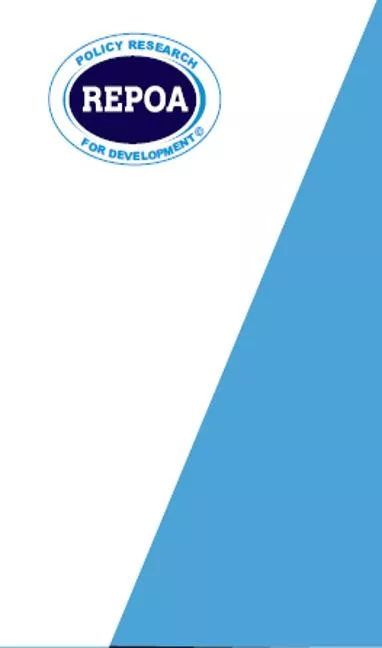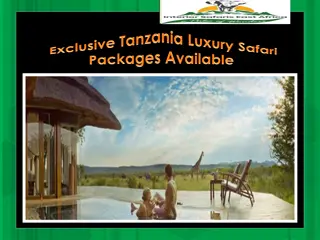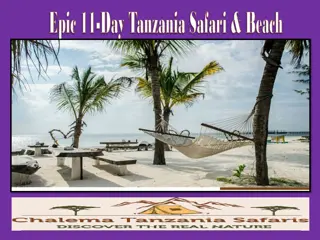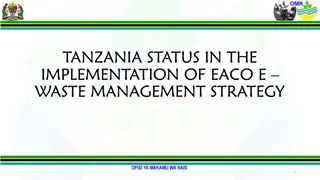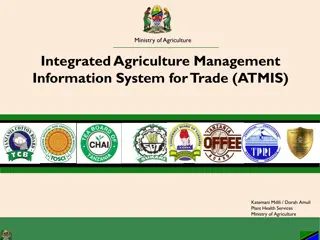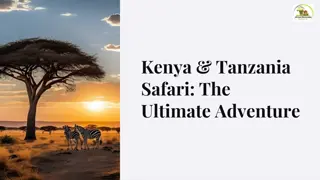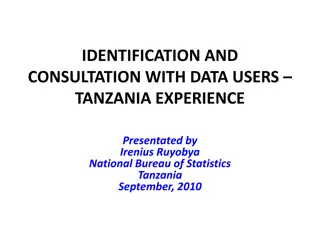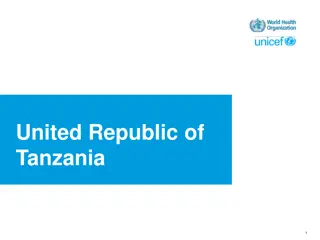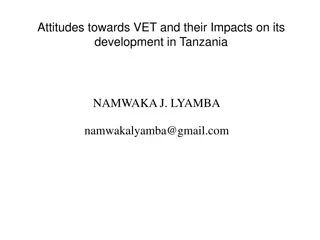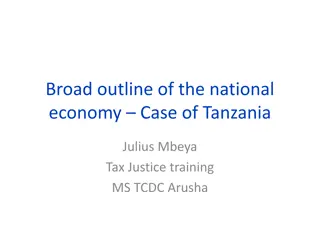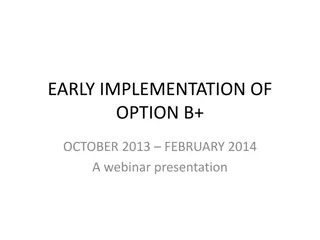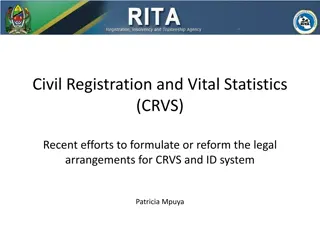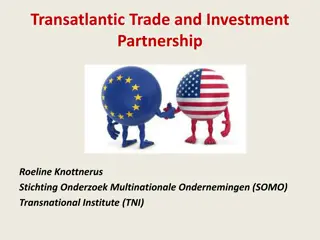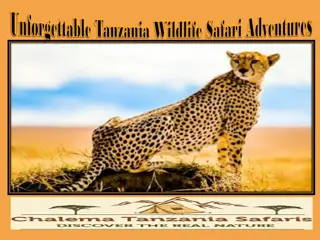Trade and Investment Strategies in Tanzania
Tanzania's trade and investment landscape, including policy initiatives, export trends, and competitiveness challenges, as discussed in a knowledge-sharing event held in Brussels. The country's efforts to enhance competitiveness and diversification along key export corridors are highlighted, along with its investment climate for value chain development.
Download Presentation

Please find below an Image/Link to download the presentation.
The content on the website is provided AS IS for your information and personal use only. It may not be sold, licensed, or shared on other websites without obtaining consent from the author. Download presentation by click this link. If you encounter any issues during the download, it is possible that the publisher has removed the file from their server.
E N D
Presentation Transcript
Competitiveness and Diversification Along Key Export Corridors and Investment Climate for Value Chain Development Donald Mmari KNOWLEDGE SHARING ON TRADE AND INVESTMENT GOOD PRACTICES II , ACP House, Brussels, Belgium 5thFebruary 2020 1
Outline Introduction Policy Landscape Good Practice Cases Constraints to competitiveness Way Forward 2
Introduction Tanzania recorded growth rates averaging 6% per annum since 2005. Tanzania an attractive trade and investment: Relative political stability Strategic geographical location -1,424 km coastline, 8 neighbours Young, growing population -54.2 million in 2018, 44% <15 Membership to regional trading blocks, EAC and SADC. Potential for global markets, eg EBA, AGOA, EPA Main export corridors: Southern, Western, Central, Northern and Zanzibar-Pemba 3
Introduction-2 Trade Value of goods exports shows a declining trend since 2016 peak, from $5.6 bn to $4.3 bn in 2018 Value of traditional exports declined faster than non-traditional Horticultural exports small share, but growing - $33 million in 2018 Imports declined from $ 8.4 bn in 2016 to $8.1 bn in 2018, larger decline in capital goods. Competitiveness Ranks poorly in the bottom quintile of WEF s Global Competitiveness Index at 117/141 countries (116/138 in 2018) Investment FDI flow declined markedly from $1.5 bn in 2015 to $755mn in 2016, but gradually increasing ($937 in 2017) 4
Policy Landscape Current trade policies (2003 for Mainland, 2006 for Zanzibar) and investment policies (1996 for Mainland, 2004 for Zanzibar) under review seeking to promote competitiveness and diversification-quality, rapid innovation, customization, cost/productivity DTIS updated: agriculture, mining and extractives and tourism Trade and investment priorities outlined in FYDP II- industrialization as its main agenda Recent Government efforts towards value-addition and beneficiation towards improving agricultural productivity and deepening agricultural value chain National Trade Facilitation Committee logistics DTIS updated Ratified WTO Trade facilitation Agreement The Blueprint for regulatory reforms to improve business environment Sector development strategies e.g. leather, cotton, etc 5
Good Practice Case-2 AFRICADO COMPANY LTD The first Tanzanian company exporting avocados (Hass) to the UK- Sainsbury, Tesco supermarkets Established in 2007, State-of-the-art packhouse facility in 2013 Diversified from poorly performing coffee estate (4,400 tones in 1972 to less than 50 tones in 1990) Raised competitiveness of AFRICADO s products, improved quality and access to export markets Avocado exports from 488 tones in 2012 to 2,579 tones in 2016, a 428.48% increase. Now designated Export Processing Zone, exporting to UK, France, and Netherlands. Some small markets in the Middle East 7
Good Practice Case-3 Smallholder farmers integrated through contractual relations- seeds, extension support, assured markets Smallholders diversified from reliance on coffee incomes-dramatic declines and fluctuations - now over 2,200 (20% female) out growers Out grower exports in 2018 581 tonnes, nearly 19% of 3,000 tonnes exported (Further expansion targets 8,000 tonnes by 2023) Investment needed to achieve quality standards and certifications too high for smallholders Knowledge based transformation of agriculture- the way for the future but entry costs for small producers entails strategic value chain partnership 8
Constraints to competitiveness Over regulation- multiplicity of permits and fees, easing with ongoing reforms but more efforts needed Stringent and costly process of compliance with standards Quality and costs of logistic services Other policy and institutional barriers 10
Way Forward Policy analysis to support ongoing revision of Tanzania s trade policy to foster the competitiveness of agro-exports, diversification and value chain development. TA to address long-standing concerns on agri-trade research data inconsistencies, M&E systems Sustainable capacity building to create a critical mass of policy analysts, researchers and trade negotiators Increased awareness of market needs and compliance by exporters Informed and continuous dialogue between public and private sectors on trade support and regulations 11


